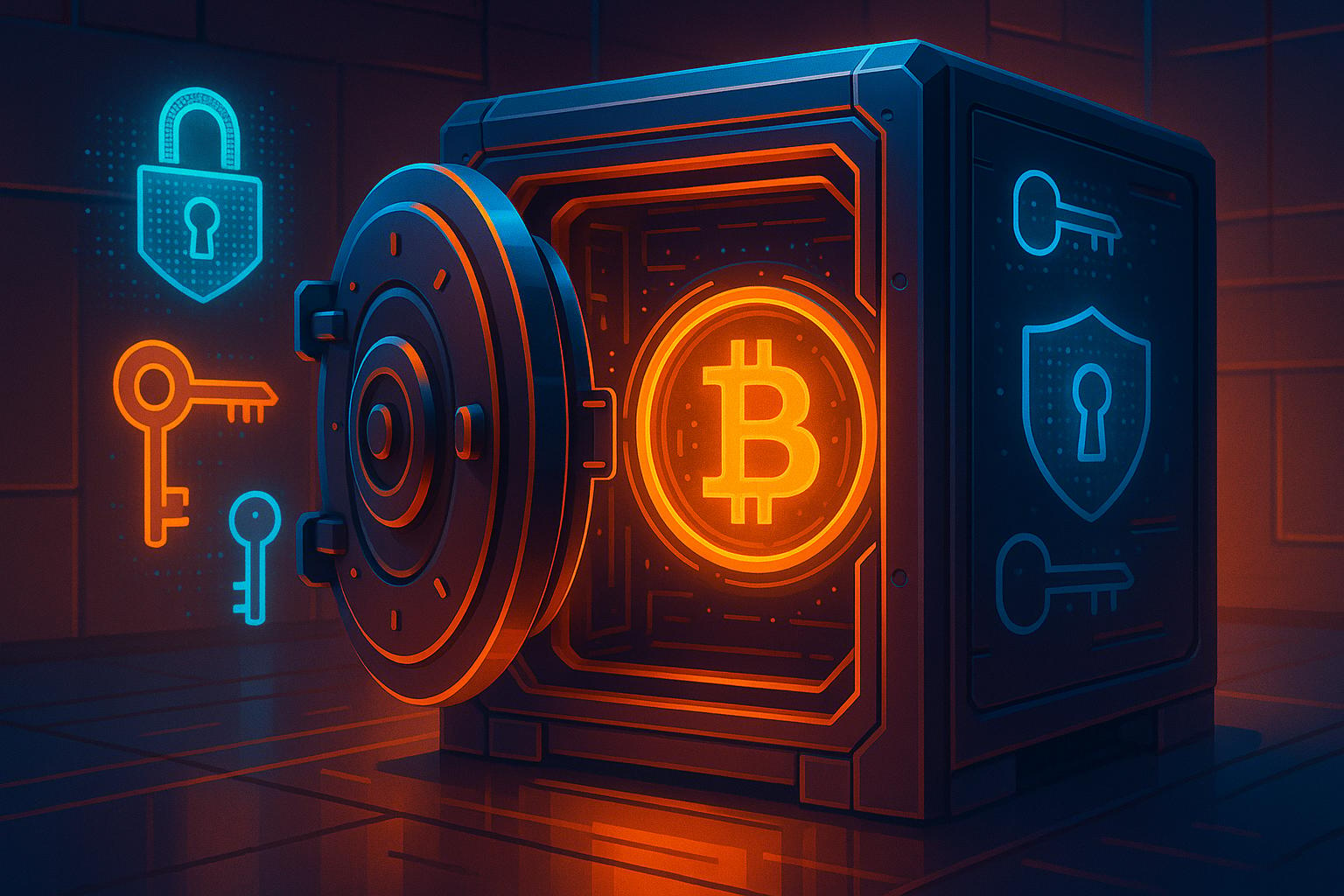Cross-chain fraud is a growing challenge in blockchain technology. With assets moving across multiple blockchains, fraudsters exploit gaps like obscure transaction details and lack of standardized security protocols. Here's how fraud detection tools help:
- Fund-flow mapping: Tracks asset movement across chains to spot suspicious patterns.
- AI-powered detection: Identifies anomalies and unusual wallet behavior.
- Real-time alerts: Flags risky transactions immediately.
- Blockchain data analysis: Combines blockchain and external data to improve accuracy.
A standout platform is BitVault, which focuses on wallet-level protection for Bitcoin and Layer 2 networks. It offers features like customizable time locks, encrypted alerts, and multisignature functionality to secure transactions.
Quick Comparison: BitVault vs. Traditional Platforms

| Feature | BitVault | Traditional Platforms |
|---|---|---|
| Network Support | Bitcoin, Layer 2 (Lightning, Liquid) | Multiple cryptocurrencies |
| Alert System | Encrypted alerts to recovery address | Real-time monitoring alerts |
| Integration Scope | Bitcoin-focused | Supports multiple blockchain networks |
| Primary Focus | Transaction-level security | Enterprise-level fraud detection |
These tools are crucial for tackling cross-chain fraud effectively. For more details, keep reading!
Cross-Chain Fraud Detection Problems
Challenges in Tracking Assets Across Multiple Blockchains
Tracking assets across different blockchains is a complex task with several challenges. Each blockchain operates with its own unique formats, validation rules, and data structures. On top of that, differences in block times and finality periods create periods of uncertainty, making it difficult to ensure seamless and secure cross-chain transfers.
Emerging Fraud Techniques
New methods of fraud are taking advantage of cross-chain technology. For example, cross-chain mixers and privacy protocols are being used to obscure transaction details. These tools split funds into smaller micro-transactions and:
- Break links between the source and destination
- Route funds through multiple chains to hide their origin
Lack of Unified Protocol Standards
A major issue lies in the absence of standardized validation rules, contract formats, and data structures across blockchains. This fragmentation forces fraud detection tools to rely on custom parsers, which slows down detection efforts and creates blind spots. These gaps highlight the key features to look for in effective fraud detection tools.
Cross-Chain Investigations: Tracing Crypto Across Blockchains
Main Fraud Detection Tool Features
Cross-chain fraud detection tools come equipped with features like fund-flow mapping, advanced data analysis, AI-driven systems, and real-time alerts to address potential threats effectively.
Fund Flow Maps
Fund-flow maps provide a clear view of how assets move across blockchains. These interactive, real-time diagrams help track transactions between wallets, exchanges, and chains. Analysts can identify suspicious activities such as:
- Breaking large sums into smaller transfers
- Circular transaction patterns between addresses
- Sudden spikes in transaction volumes involving certain participants
- Cross-chain transfers designed to obscure the source of funds
Adding external data to these insights enhances the ability to detect fraud.
Blockchain and External Data Analysis
Combining blockchain data with external sources improves detection accuracy. This includes monitoring cross-chain exchange deposits, tracking known fraudulent addresses, reviewing suspicious wallet activity reported on social media, and analyzing compliance records. By correlating these datasets, it's easier to identify and flag illegal transactions before they escalate.
AI systems take this analysis further by identifying patterns and anomalies.
AI Detection Systems
AI systems play a key role in spotting fraud that might go unnoticed with traditional methods. These systems rely on:
- Deep learning models that adapt to new fraud tactics
- Pattern recognition across various blockchain protocols
- Behavioral analysis of wallet activity
- Anomaly detection based on historical transaction data
Once suspicious activity is identified, instant alert systems ensure a quick response to potential threats.
Instant Alert Systems
Real-time alerts provide immediate notifications about high-risk transactions. These systems can assign risk scores, automatically freeze transfers that exceed certain thresholds, and apply custom rules based on transaction size and frequency.
For added security, BitVault introduces time-delayed transactions, creating a buffer to prevent unauthorized transfers even if other defenses fail to catch the threat in real time.
sbb-itb-c977069
Top Fraud Detection Platforms
BitVault Security Features
BitVault goes beyond just identifying threats - it provides wallet-level protection for cross-chain activities. Designed as an open-source, non-custodial Bitcoin wallet, it incorporates several important security measures:
- Layer 2 Integration: Works seamlessly with Bitcoin Layer 2 networks like Liquid and the Lightning Network.
- Advanced Security Measures: Utilizes AES-256 encryption to safeguard data, optimizes on-chain fees, sends encrypted alerts to a recovery address of your choice, and includes built-in multisignature functionality for added protection.
Up next, we’ll see how BitVault stacks up against other top platforms.
Platform Comparison
Platforms vary in their approach: traditional tools focus on monitoring transactions and sending alerts, while BitVault emphasizes preventive measures for each transaction.
Here's a quick look at their key features:
| Feature Category | BitVault | Traditional Fraud Detection Platforms |
|---|---|---|
| Network Support | Bitcoin and Layer 2 (Lightning, Liquid) | Multiple cryptocurrencies |
| Alert System | Encrypted alerts to a designated address | Real-time monitoring alerts |
| Integration Scope | Focused on Bitcoin and Layer 2 networks | Supports multiple blockchain networks |
| Primary Focus | Securing individual Bitcoin transactions | Enterprise-level fraud detection and compliance |
BitVault takes a different approach by sending fully encrypted notifications to a recovery address chosen by the user. This gives users more control over how and when they receive alerts, compared to the real-time notifications provided by broader fraud detection platforms. This unique setup prioritizes user autonomy and transaction-level security.
Next, we’ll break down the main takeaways from this comparison.
Summary
After analyzing top platforms and BitVault's security measures, some key strategies stand out for protecting against cross-chain fraud.
Key Points
In addition to techniques like fund-flow mapping, AI-powered anomaly detection, and real-time alerts, wallet-level features such as BitVault's time locks and multisig options add another layer of protection for cross-chain transactions.
BitVault's specific security features include:
- Customizable time locks to prevent immediate unauthorized transfers
- Encrypted alerts sent to a user-designated recovery address
- Built-in multisig and AES 256-bit encryption for enhanced security
These features show how wallet-level protections can work alongside advanced monitoring tools to tackle cross-chain fraud effectively.




